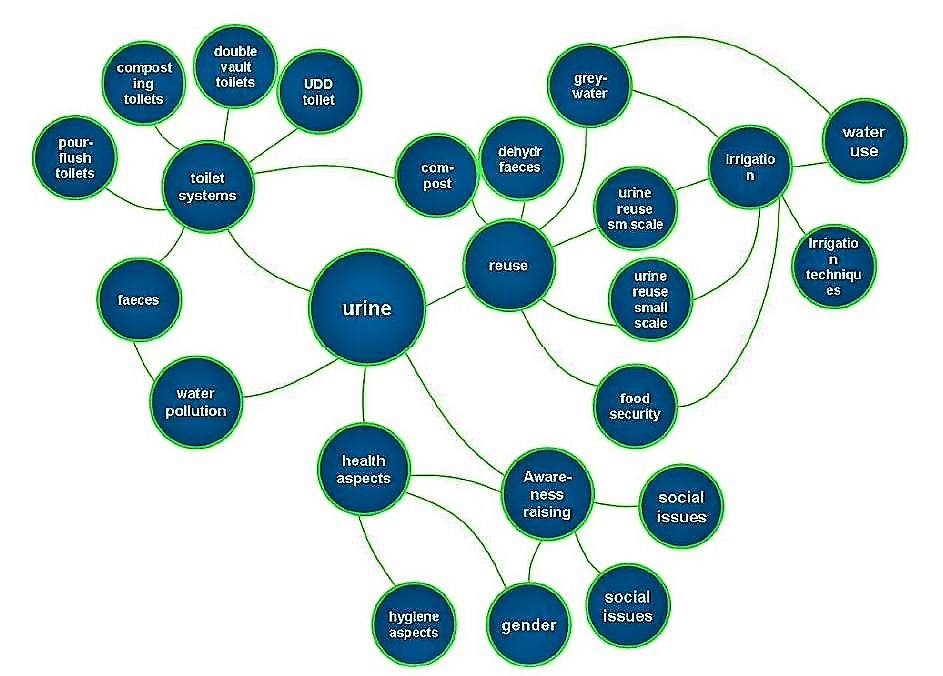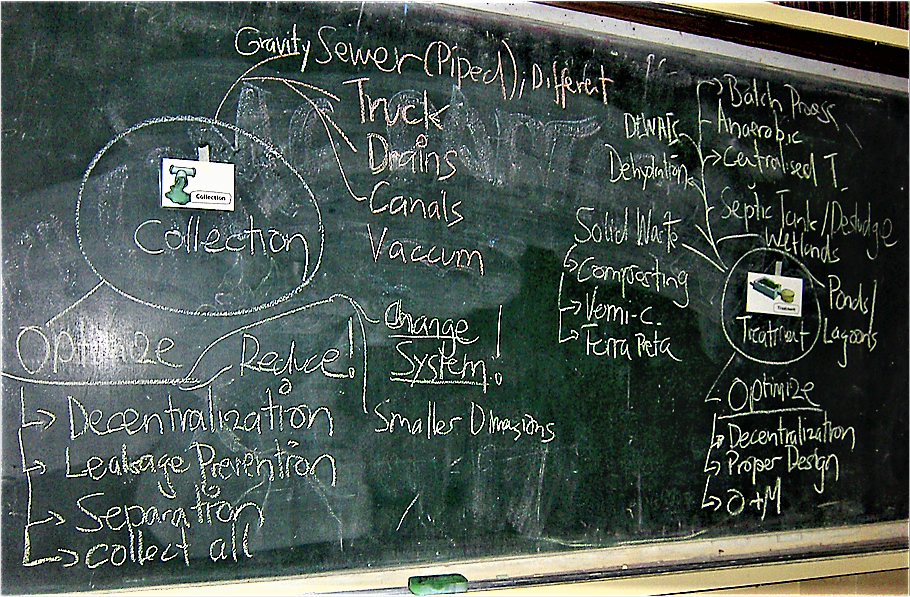Executive Summary
“Brainstorming is a popular tool that helps you generate creative solutions to a problem. It is particularly useful when you want to break out of stale, established patterns of thinking, so that you can develop new ways of looking at things. Brainstorming can help you to bring the diverse experience of all team members into play during problem solving. This increases the richness of ideas explored. Because brainstorming is fun, it helps team members bond with one-another as they solve problems in a positive, distraction-free environment. During the brainstorming process there is no criticism of ideas. The best approach to brainstorming combines individual and group brainstorming. Group brainstorming needs formal rules for it to work smoothly” (MIND TOOLS 2010).
The original approach to brainstorming was developed by Alex Osborn, in the 1950s. Since then, many new forms have been developed.
What Is Brainstorming?
(Adapted from MIND TOOLS 2010)

“Brainstorming is a process for developing creative solutions to problems. Brainstorming works by focusing on a problem, and then deliberately coming up with as many solutions as possible and by pushing the ideas as far as possible. One of the reasons it is so effective is that the brainstormers not only come up with new ideas in a session, but also spark off from associations with other people's ideas by developing and refining them.
There are four basic rules in brainstorming (OSBORN 1963) intended to reduce social inhibitions among team members, stimulate idea generation, and increase overall creativity:
- No criticism: Criticism of ideas are withheld during the brainstorming session as the purpose is on generating varied and unusual ideals and extending or adding to these ideas. Criticism is reserved for the evaluation stage of the process. This allows the members to feel comfortable with the idea of generating unusual ideas.
- Welcome unusual ideas: Unusual ideas are welcomed as it is normally easier to "tame down" than to "tame up" as new ways of thinking and looking at the world may provide better solutions.
- Quantity wanted: The greater the number of ideas generated, the greater the chance of producing a radical and effective solution.
- Combine and improve ideas: Not only are a variety of ideals wanted, but also ways to combine ideas in order to make them better” (CLARK 2010).
Brainstorming can be done in groups – but also on your own – sometimes it is even more effective, as you are not influenced by what other people may think of your ideas. You may not, however, develop ideas as fully when you brainstorm on your own, as you do not have the wider experience of other members of a group to help you (MIND TOOLS 2010).
This is how a brainstorming could look like – all ideas that concern the topic of urine in relation to water management and sanitation were written down.
How to Use Brainstorming
(Adapted from MIND TOOLS 2010)

Decide upon the topic you want to do a brainstorming, and think about how you can present this effectively to participants. Maybe it’s useful to produce a short handout.
- Find a comfortable meeting environment, and set it up ready for the session (see also logistics). Brainstorming can be done virtually everywhere – even outside, as long as it’s comfortable and quiet enough to work.
- Prepare material to write down ideas: A flipchart, a pin board, a blackboard, or even moist soil or sand will do. Don’t forget enough pens to write with. Make sure there is enough space to write down upcoming ideas.
- Explain the issue to the participants. Define the problem you want solved clearly, and lay out any criteria to be met. Make it clear that that the objective of the meeting is to generate as many ideas as possible.
- Appoint one person to record the ideas that come from the session. These should be noted in a format than everyone can see and refer to. Depending on the approach you want to use, you may want to record ideas on flip charts, on a blackboard, on a pin board, computers with data projectors, or even in soft soil / sand.
- Ask people to give their ideas, making sure that you give everyone a fair opportunity to contribute. Give people plenty of time on their own at the start of the session to generate as many ideas as possible (see also time management).
- Encourage people to develop other people's ideas, or to use other ideas to create new ones.
- Encourage an enthusiastic, uncritical attitude among members of the group. Try to get everyone to contribute and develop ideas, including the quietest members of the group.
- Make sure you write down all ideas that are brought forward.
- Ensure that no one criticises or evaluates ideas during the session. Criticism introduces an element of risk for group members when putting forward an idea. This stifles creativity and cripples the free running nature of a good brainstorming session.
- Keep all the generated ideas visible. If one page/blackboard becomes full, remove it from the pad and tape it to a wall as that it is visible. This "combined recollection" is helpful for creating new ideals.
- When the participants say they "can’t think of any more ideas" then give them about 15 more minutes as the best ideas sometimes come towards the end of a longer thought process.”
- Conclude the session with an evaluation of the ideas generated (see below).
- Make sure you record the ideas somehow (take a picture, draw them on paper that you can take along etc.).
Evaluation of Ideas
Once all the solutions have been written down, you can further evaluate the solutions. It is worthwhile to have a break in between ending the brainstorming and evaluating ideas, to allow participants to take a step back.
Determine those solutions that seem most worthy to further look at (e.g. with a show of hand, or with giving each person two stickers that he/she can put next to the idea he/she likes best etc.). Then, those solutions can be analysed further. Start the selection and synthesis step with the group. At the end of the session, ask everyone to review the boards of ideas, and talk about the specific ideas or directions they like and why. The evaluation process can go on after the session in a smaller team (PLATTNER 2010).
Other Tips and Tricks that May Make Your Session More Effective
If people are not already used to working together, consider using an appropriate warm-up exercise or icebreaker.
- Think about the effect the locality has on you: A nice surrounding (why don’t go outside?) will maybe produce more creative ideas than a cramped office space (see also logistics).
- Let people have fun brainstorming. Encourage them to come up with as many ideas as possible, from solidly practical ones to wildly impractical ones. Welcome creativity!
Where possible, participants in the brainstorming process should come from as wide a range of disciplines as possible. This brings a broad range of experience to the session and helps to make it more creative. However, do not make the group too big – as with other types of teamwork, groups of 5 to 7 people are often most effective (see also group works).
“Conventional group problem-solving can be fraught with problems. Confident, "big-ego" participants can drown out and intimidate quieter group members. Less confident participants can be too scared of ridicule to share their ideas freely. Others may feel a pressure to conform with the group view, or are held back by an excessive respect for authority. As such, group problem-solving is often ineffective and sterile.
By contrast, brainstorming provides a freewheeling environment in which everyone is encouraged to participate. Quirky ideas are welcomed, and many of the issues of group problem-solving are overcome. All participants are asked to contribute fully and fairly, liberating people to develop a rich array of creative solutions to the problems they are facing” (MIND TOOLS 2010).
Brainstorming. A Big Dog, Little Dog and Knowledge Jump Production
Applied imagination: Principles and procedures of creative problem solving
Design Methods – Brainstorming
An excellent, three-page description of how to do a brainstorming – from the start to wrapping up.
PLATTNER (n.y): Design Methods – Brainstorming. URL [Accessed: 12.05.2010]Brainstorming Principles and Rules
A one-page description of the most important principles and rules when doing a brainstorming.
BRAINSTORMING CO UK (1999): Brainstorming Principles and Rules. URL [Accessed: 12.05.2010]Design Methods – Brainstorming
An excellent, three-page description of how to do a brainstorming – from the start to wrapping up.
PLATTNER (n.y): Design Methods – Brainstorming. URL [Accessed: 12.05.2010]Module 2: Brainstorming
This publication describes what brainstorming is, how it is done, and what rules there are. The publication contains a number of slides that can easily be used for presenting the method of brainstorming to an audience.
BALANCED SCORECARD (n.y): Module 2: Brainstorming. URL [Accessed: 12.05.2010]Brainstorming - Generating Many Radical, Creative Ideas
A very useful site that contains an extensive description of brainstorming, and includes also information on other techniques. Furthermore, it also describes alterations of the classical brainstorming.
Brainstorming
This site explains brainstorming in a very brief and concise manner, and also contains a section on how to evaluate the ideas generated.
How to use the Random Picture Technique
Though this site looks a bit old, it contains useful information on brainstorming and other tools on creative techniques.
Balanced Scorecard Institute
The Balanced Scorecard Institute, a Strategy Management Group company, helps organizations succeed through improved strategic focus and performance. It contains descriptions of many creativity tools.
Is Brainstorming a Waste of Time?
This Blog has a critical view of brainstorming and focuses on negative aspects of this approach.
XMind
A software for brainstorming on your computer.
SpicyNodes
A software for brainstorming on your computer
TheBrain
A software for brainstorming on your computer

